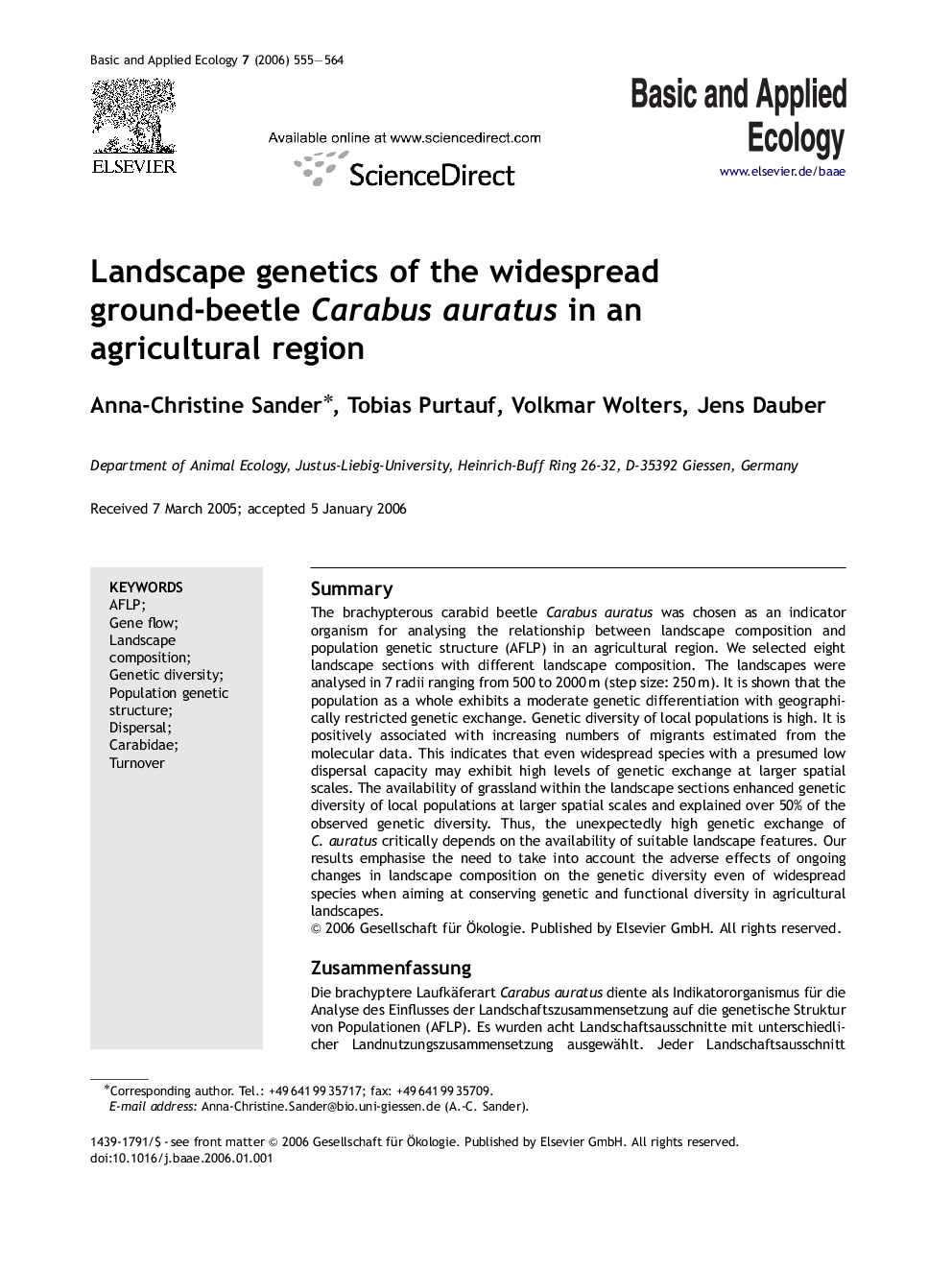| Article ID | Journal | Published Year | Pages | File Type |
|---|---|---|---|---|
| 4384691 | Basic and Applied Ecology | 2006 | 10 Pages |
SummaryThe brachypterous carabid beetle Carabus auratus was chosen as an indicator organism for analysing the relationship between landscape composition and population genetic structure (AFLP) in an agricultural region. We selected eight landscape sections with different landscape composition. The landscapes were analysed in 7 radii ranging from 500 to 2000 m (step size: 250 m). It is shown that the population as a whole exhibits a moderate genetic differentiation with geographically restricted genetic exchange. Genetic diversity of local populations is high. It is positively associated with increasing numbers of migrants estimated from the molecular data. This indicates that even widespread species with a presumed low dispersal capacity may exhibit high levels of genetic exchange at larger spatial scales. The availability of grassland within the landscape sections enhanced genetic diversity of local populations at larger spatial scales and explained over 50% of the observed genetic diversity. Thus, the unexpectedly high genetic exchange of C. auratus critically depends on the availability of suitable landscape features. Our results emphasise the need to take into account the adverse effects of ongoing changes in landscape composition on the genetic diversity even of widespread species when aiming at conserving genetic and functional diversity in agricultural landscapes.
ZusammenfassungDie brachyptere Laufkäferart Carabus auratus diente als Indikatororganismus für die Analyse des Einflusses der Landschaftszusammensetzung auf die genetische Struktur von Populationen (AFLP). Es wurden acht Landschaftsausschnitte mit unterschiedlicher Landnutzungszusammensetzung ausgewählt. Jeder Landschaftsausschnitt wurde in sieben verschiedenen Radien analysiert (500 bis 2000 m, Schrittgröße: 250 m). Unsere Ergebnisse zeigen, dass die Population insgesamt eine moderate genetische Differenzierung aufweist, die mit zunehmender geographischer Distanz zunimmt. Die genetische Diversität lokaler Populationen ist hoch und positiv mit der berechneten Anzahl migrierender Individuen korreliert. Dies zeigt, dass auch weit verbreitete und scheinbar wenig mobile Arten einen hohen Genaustausch auf Landschaftsebene haben können. Die Verfügbarkeit von Grünland im Landschaftsausschnitt erhöhte die genetische Diversität der lokalen Population und erklärte über 50% der beobachteten genetischen Diversität. Der unerwartet hohe Genaustausch von C. auratus hängt also entscheidend von der Verfügbarkeit geeigneter Landschaftskomponenten ab. Konzepte zum Erhalt der genetischen und funktionellen Diversität in Agrarlandschaften sollten also auch den Einfluss des Nutzungswandels auf weit verbreitete Arten berücksichtigen.
